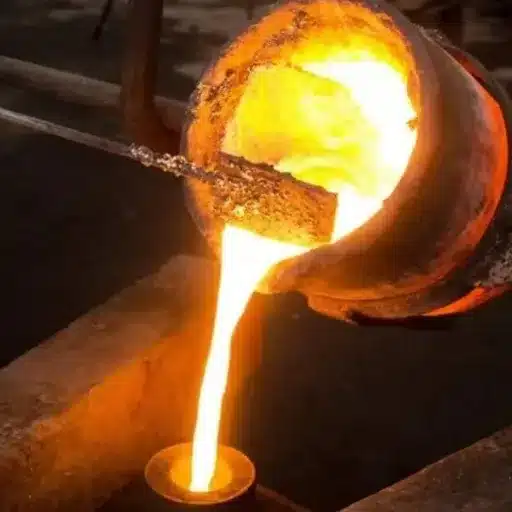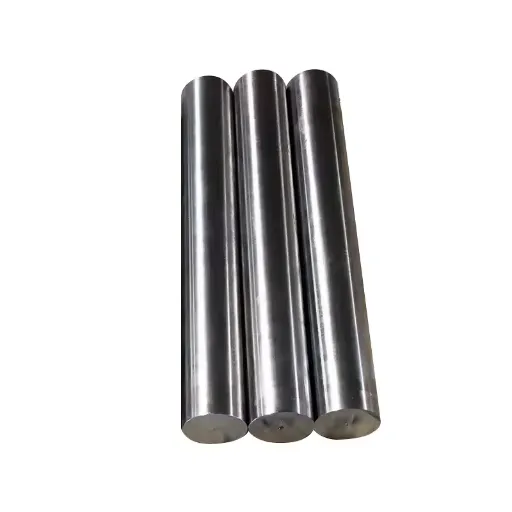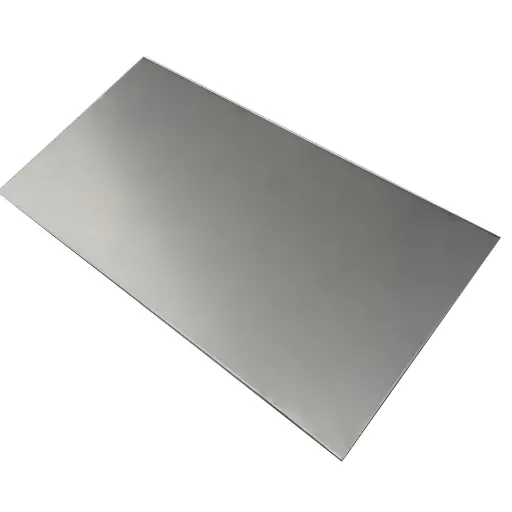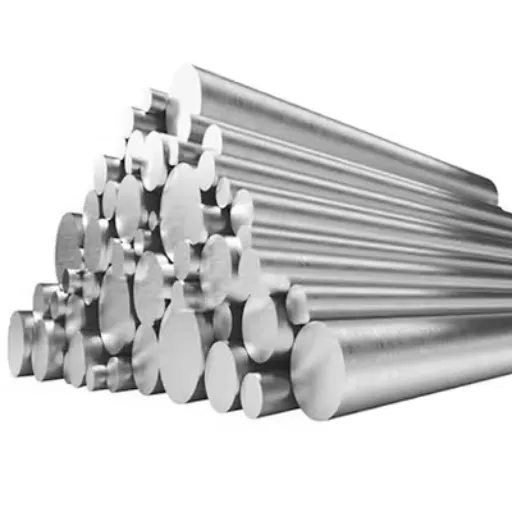The melting points of different metals are very important from an engineering, manufacturing, and industrial point of view. In fact, steel, carbon steel, and stainless steel belong to the group of metals that are most widely used due to their strength, durability, and versatility. However, what will occur to these metals when they are heated up to extreme temperatures? This article studies the melting points of these three metals, informs about their non-metallic behavior at high temperatures, and gives reasons why this knowledge is necessary for selecting the right metal for particular applications. So, if you are a materials engineer, a manufacturer, or just interested in the way metals react to heat, this all-encompassing guide will provide you with the necessary insights to expand your knowledge.
Introduction to Melting Points of Metals
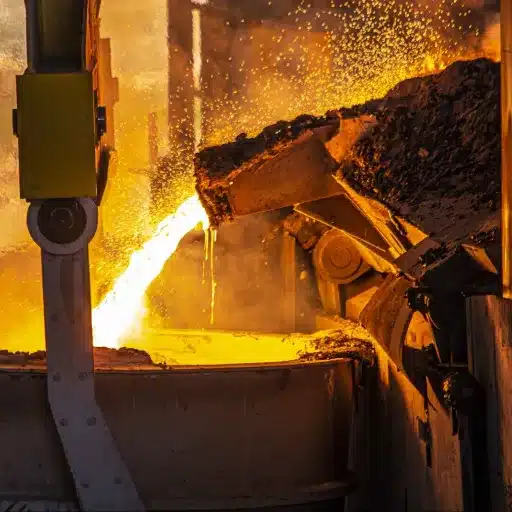
What is Melting Point?
The melting point is an important characteristic of a substance, and it tells you the temperature at which the substance will change its state from solid to liquid under normal conditions. The process of melting involves the particles in the solid gaining enough energy(Kinetic Energy) to break the intermolecular forces and move freely thus becoming a liquid. Melting point is one of the main properties for metals, as it will determine their usage in manufacturing, engineering, and industrial processes.
Enemies of metals have melting points that are high compared to other materials, as a matter of fact, the strength of the metallic bonds is the major reason behind this. Taking tungsten as an example, it has about 3422°C (6192°F) which is one of the highest melting points among all the metals, and this makes it suitable for use in places where great heat is there like in space applications and the filaments of light bulbs. However, on the contrary, there are also metals like mercury, which have melting points that can be considered low, and for instance, mercury will stay in a liquid state at the normal room temperature due to its melting point of -38.83°C (-37.9°F).
Importance of Melting Points in Industry
The melting points of metals are a major factor in different industrial applications since they set the temperature limits for the materials to be used effectively. For example, high temperate environments such as aerospace and power generation require materials with high melting points for stability and performance to be guaranteed. Tungsten, which melts at 3422°C (6192°F), is one of the materials used in manufacturing rocket nozzles, electrical contacts, and other applications where heat and pressure are extreme because it can maintain its original form even under extreme heat.
In the case of manufacturing processes like casting and welding, knowing a metal’s melting point is essential for the operation to be efficient and to avoid the material failure. For instance, the melting point for aluminum is 660.3°C (1220.5°F), which is relatively low, and this is the reason why the metal is the most commonly used one in automotive and aerospace industries to manufacture lightweight components that weld or cast easily. On the other hand, metals like titanium, which melts at 1668°C (3034°F), are selected where strength and high-temperature resistance are necessary, such as in jet engines or biomedical implants discree of dielectric.
Understanding the Melting Point of Carbon Steel
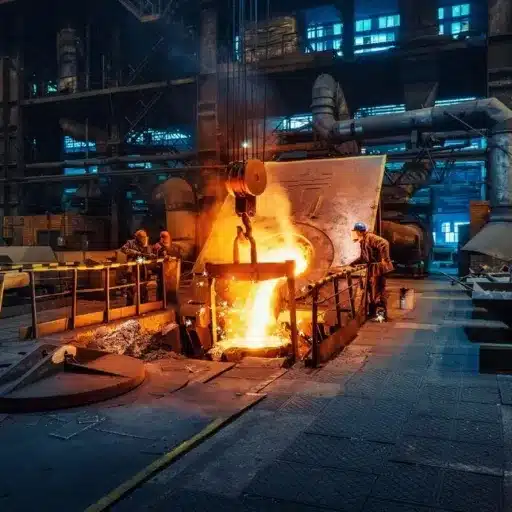
Chemical Composition of Carbon Steel
Carbon steel is an iron-carbon alloy that is very much like iron with carbon as the main alloying element. Other elements such as manganese, silicon, sulfur, and phosphorus are present in very small amounts, and their concentration depends on the grade and the application of the steel. The carbon content in carbon steel generally varies from 0.05% to 2.1% which has a great impact on the hardness, ductility, and strength of the steel. Usually, manganese (0.30% to 1.65%), silicon (around 0.40%), and small amounts of sulfur and phosphorus are also present. Each of these elements contributes significantly to the steel’s specific properties.
Manganese, for example, is a powerful alloying element that gives steel both hardness and wear resistance, while silicon helps to remove oxygen from metal during production. The presence of sulfur and phosphorus, though they are usually unwanted in large amounts, is that their trace presence sometimes makes certain grades of steel easier to machine. High-carbon steels (0.6% and above carbon content) are much stronger and more wear resistant as compared to low-carbon steels (0.25% and below carbon content) which are quite ductile and can be easily subjected to shaping and welding, thus suitable for such applications.
Melting Temperature Range of Carbon Steel
Melting temperature range of carbon steel is quite different for each type and grade of the steel as it is the carbon content that directly affects the material’s properties. In general, carbon steel has a melting point range of approximately 2500°F (1370°C) to 2800°F (1540°C). Low-carbon steels having a carbon content up to 0.25% melt at the higher end of the range because they have lower alloying content. In contrast, high-carbon steels having 0.6% to 1.5% carbon content melt at the lower end of the range.
It should be remembered that the mentioned temperatures are rough estimates since melting range can be affected by factors like the presence of other alloying elements and impurities. For instance, the melting behavior could be slightly altered by the presence of manganese, silicon, or sulfur. Knowledge of this range of temperatures is essential for the operations of metal casting, welding, and heat treatment where the control of thermal properties to be accurate so that the steel is able to perform and has its mechanical integrity.
Comparative Analysis of Melting Points
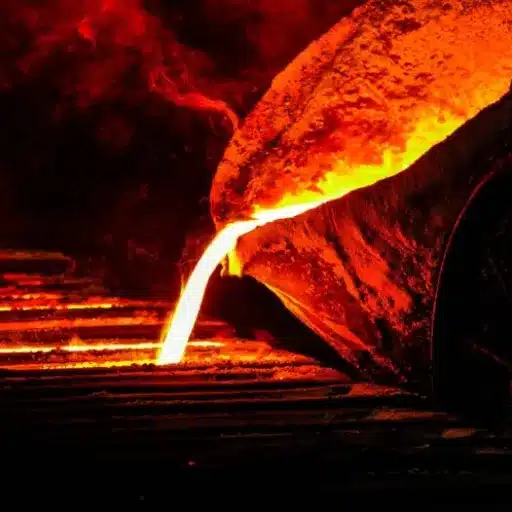
Melting Point of Steel vs. Carbon Steel
Melting point differences between steel and carbon steel are directly linked to their chemical composition and the particular kind of alloying elements mixed into them. Usually, the melting point of steel of the same grade is 1370°C to 1510°C (2500°F to 2750°F). The thermal properties could be modified by alloying elements such as manganese, chromium, or nickel and thus, this range could shift accordingly.
On the contrary, carbon steel, which mainly consists of iron and different amount of carbon, generally has a melting point of 1425°C to 1540°C (2600°F to 2800°F). The carbon content is the main parameter controlling the melting point of this range; low-carbon steels (with less than 0.25% carbon) have slightly higher melting point whereas high-carbon steels (over 0.6% carbon) may have lower melting point due to the presence of different types of carbide compounds formed.
| Steel Type | Melting Point Range (°C) | Melting Point Range (°F) |
|---|---|---|
| Steel (General) | 1370°C – 1510°C | 2500°F – 2750°F |
| Carbon Steel | 1425°C – 1540°C | 2600°F – 2800°F |
Impact of Alloying Elements on Melting Point
For instance, in the case of stainless steel, chromium (Cr) which is already the most expensive element in steel making, is added in high amounts normally around 10-30% to the alloy in order to increase its resistance towards corrosion. But the disadvantage of this is that the melting point of pure iron (1538°C or 2800°F) is reduced by this addition to a range that is usually between 1400°C to 1450°C (2552°F to 2642°F). In the same manner, the melting point of carbon steel is lowered slightly (if the carbon content is reduced to less than 2%) during the process of melting but the hardness and strength of the metal significantly increased.
Aluminum alloys, among others, which are widely applied in the aerospace and automotive industries, are very much influenced by the alloying elements. The melting point of pure aluminum is 660°C (1220°F). In contrast, when Al is combined with other elements like Si and Mg and Cu, the melting range gets shifted according to the type of alloy. For instance, the aluminum-silicon systems which consist of eutectic reactions start melting at as low as 577°C to 650°C (1071°F to 1202°F), thus making them suitable for casting applications that require precise thermal control.
Properties of Steel Influencing Melting Points
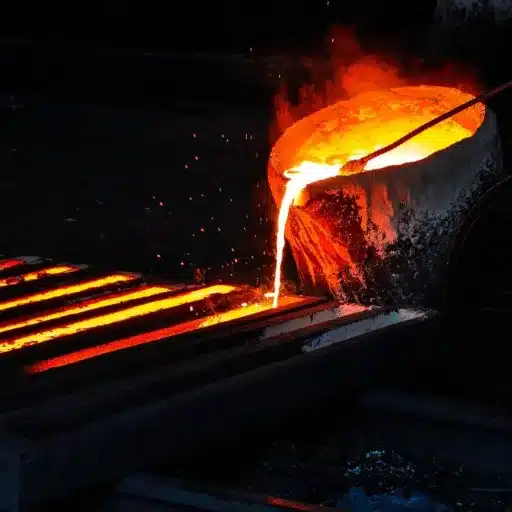
Ductility and Hardness of Different Steels
The steel’s ductility along with its hardness is among the most important factors that determine its uses in various industries, and these properties are heavily dependent on the alloying elements and heat treatment processes used. The term ductility refers to the capability of a material to undergo deformation when subjected to tensile stress and thus, its versatility and softness are practically the only requirements among the applications that need ductility. In contrast, hardness indicates a material’s resistance to deformation and wear, which is an essential property for durability in harsh environments.
For instance, low carbon steel has a significantly high ductility and low hardness, which rates it as a desired post-product in construction and manufacturing industries. Its tensile strength is around 400 MPa and 550 MPa on average. On the other hand, high-carbon steel gets fortified by more than 0.6% carbon and delivers excellent hardness plus tensile strength beyond 700 MPa, though entailing loss of ductility. The alloy steels are the ones that normally contain chromium, nickel, and vanadium for example; however, they acquire strength for being very hard and ductile at the same time, thus opening up the door for both the latter and the automotive components.
| Steel Type | Carbon Content | Ductility | Hardness | Tensile Strength |
|---|---|---|---|---|
| Low Carbon Steel | ≤ 0.25% | High | Low | 400-550 MPa |
| High Carbon Steel | > 0.6% | Low | High | > 700 MPa |
Corrosion Resistance in Relation to Melting Points
Corrosion resistance is among the indispensable properties for materials in the case of which exposure to a harsh environment is going to be a constant, for example, the marine, chemical processing, or aerospace industry. The dependency of the corrosion resistance on the melting points can be very different from one material type to another depending on its composition. In most cases, it is the metals with the highest melting points, like nickel-based alloys and titanium, that get the credit for their stability and good performance in extreme environmental conditions.
Stainless steels are one of the best examples of a material that provides perfect for its melting points and corrosion resistance. Grade 316 stainless steel which has molybdenum content provides the highest resistance to chloride-ion-induced pitting corrosion, and melting range close to 2,500 to 2,550°F (1,370 to 1,399°C) is reported. In the same vein, titanium has been noted not just for the exceptional corrosion resistance, but also for the melting point of 3,034°F (1,668°C), thus the material is very well-suited to saltwater environments.
Practical Insights on Melting Points
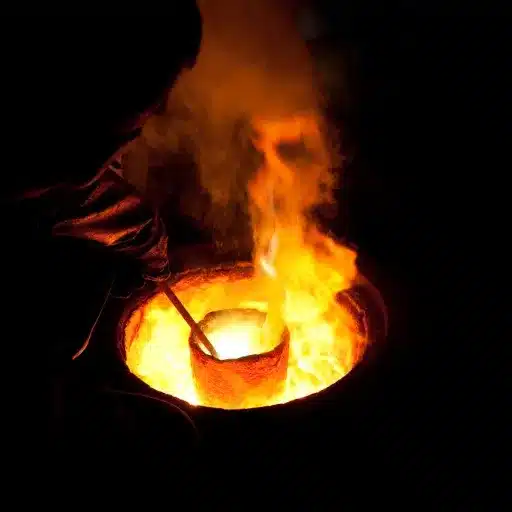
The Importance of Melting Point Understanding for Industry Applications
In general, understanding melting points of different substances is vital for many industries since it relates directly to the selection of materials, optimization of processes, and performance of products. For example, in metallurgy and manufacturing when the melting point of the specific material is known, it makes possible to choose it for high-temperature applications or not. Taking tungsten as an example, which has an extremely high melting point at about 3422°C, it is used in the aerospace and electrical industries that require major heat resistance.
Moreover, melting point determinations are helpful in the plastics and polymers industries for further developing the efficiency of their manufacturing processes, mainly in injection molding and extrusion. As an illustration, Nylon 6 with its melting point around 220°C allows the supplier to set the temperature for processing exactly without risking the quality of the material.
Melting Point Charts Use in Project Planning
Melting point charts have a major impact on project planning as they are strong aids, especially in the pharmaceuticals, materials engineering, and food production industries. Consulting a proper melting point chart, the teams would be able to determine the thermal properties of different chemicals inaccurately, which would, in turn, help them to choose the right materials for the specific use and also make predictions on the behavior of the substances under controlled conditions. For example, the production of certain polymers depends on certain values like the melting point of polyethylene which is around 110-130°C to be able to come up with a product that has the desired performance characteristics and yet is thermally stable.
Incorporation of real-time data such as melting points of alloys or compounds also results in less energy consumption. For instance, metals like aluminum (660.3°C) and copper (1,084°C) have to be processed at precise temperatures to avoid waste and ensure the quality of the product is consistent. Planning with this data helps maintain the processes efficient and at the same time reduce the negative impact on the environment. This method helps to eliminate mistakes and cut down the costs that would be incurred as a result of either material degradation or over-processing.
| Material | Melting Point (°C) | Industrial Application |
|---|---|---|
| Tungsten | 3422°C | Aerospace, electrical industries |
| Nylon 6 | 220°C | Injection molding, extrusion |
| Polyethylene | 110-130°C | Polymer production |
| Aluminum | 660.3°C | Automotive, aerospace |
| Copper | 1,084°C | Electrical, construction |
Reference Sources
-
Hydraflu
- Title: Comparing the Melting Points of Different Types of Steel
- This source discusses the melting points of various types of steel, including carbon steel, and provides specific temperature ranges.
-
Metal Supermarkets
- Title: The Melting Points of Metals
- This source offers a comprehensive list of melting points for different metals, including carbon steel, stainless steel, and others.
-
Industrial Metal Supply
- Title: Differences Between Carbon Steel and Stainless Steel
- This source explains the differences between carbon steel and stainless steel, including their melting points and other properties.
Frequently Asked Questions (FAQs)
What is the melting point of carbon steel?
The melting point of carbon steel is determined by its carbon content and is usually in the range of about 1425°C to 1540°C (2600°F to 2800°F). The melting point gets a bit higher with the elevated carbon content.
How does the percentage of carbon affect the melting point of steel?
The melting point of steel is directly related to the carbon content. The more carbon, the more likely the melting point will change slightly up or down, which is mainly due to the alterations in steel’s microstructure and properties.
What are the different types of steel and their melting points?
Steel is classified into different types such as low carbon, medium carbon, and high carbon. Each of these has its own melting point, with high carbon being the most, and low carbon being the least in terms of temperature.
How do alloying elements impact the melting point of steel?
The melting point of steel can be shifted due to the presence of alloying elements like manganese, tungsten, and chromium. Not only that but these elements will improve the steel’s hardness, ductility and overall performance but at the same time, they will also affect its melting temperature.
Why is understanding the melting point of steel important in steel production?
In steelmaking, knowing the melting point is of paramount importance, as it helps in selecting the correct temperatures for the melting and forging processes. This information allows the production of steel with guaranteed quality and integrity.

